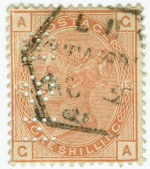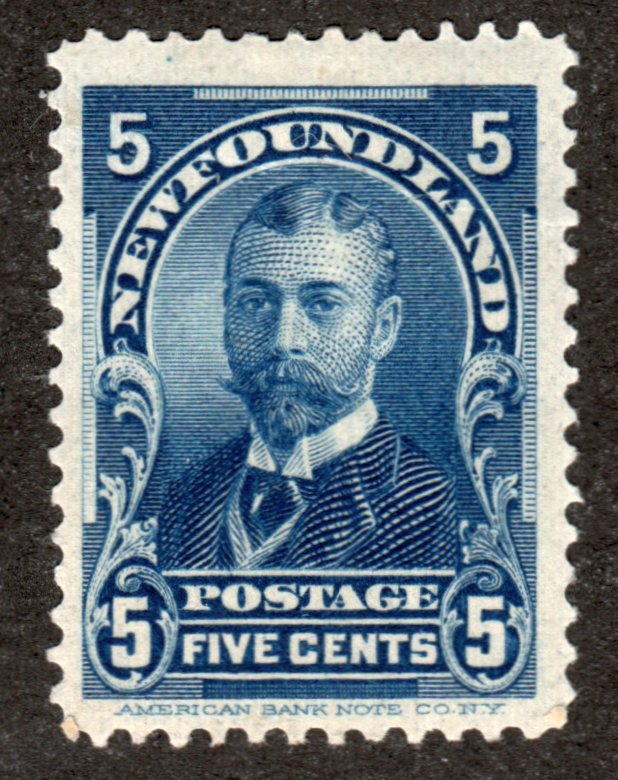
Discussion - Member to Member Sales - Research Center

Discussion - Member to Member Sales - Research Center





6 Members
like this post.
Login to Like.

05:33:08am
I cannot help with the French transit city, but the small '3/5' circle is likely a postage due mark.
It indicates that '3/5ths' of the correct postage needs to be collected from the recipient at the point of delivery in the local currency.

3 Members
like this post.
Login to Like.
It looks like the French had a postal facility in Tientsin, China which is the return address of the ... Consulate General. It is now Romanized as Tianjin.
Here's its Wikipedia Page https://en.wikipedia.org/wiki/Tianjin

1 Member
likes this post.
Login to Like.
Your French postmark is TIENTSIN-CHINE, not a French City, a French post office in Tientsin, China.
Here is one like yours, snipped from eBay, showing more detail:
Nice cover!
Linus


2 Members
like this post.
Login to Like.
Thank you for all your responses!
I think I am a bit confused. The wax seal says American consulate general in Tientsin. So does this mean the route here is US consulate in Tientsin -> French Post office in Tientsin -> Siberia -> New York? The cancel on the stamps on the front says "Tientsin", which seems like a different post office from the French one in the same city?

Login to Like
this post
It does look fascinating. Were the French taking care of international post from Tientsin in 1909? What was the Siberian route? Was it on the railway towards Europe or via ship going east out of Vladivostok? I suspect the European route would make more sense with the French involvement. I will see what I can dig up. You can be sure the routes have been studied by philatelists.

1 Member
likes this post.
Login to Like.
abhist -
Your cover was franked with stamps from China and was mailed at the Chinese post office in Tientsin, China. The Chinese Post Office was not a member of the UPU (Universal Postal Union) in 1909, as it was not a member until September of 1914. Any overseas-bound mail out of China was required to route through a foreign post office that was a UPU member. China had treaty port agreements with France, Russia, Germany, Great Britain, and others allowing them to set up post offices in China. Your cover was routed through the French post office in China so it could leave the country, thus the double country postmarks.
Tientsin, China had connecting railway lines to the Trans-Siberian Railway Line, and mail marked "Via Siberia" would normally route eastward on this railway. The massive Trans-Siberian Railway was completed in phases from 1891 to 1916. It spanned seven time zones and was approximately 5,723 miles long, or 9,259 km. It was not completely finished when your letter was mailed in 1909.
Hope this helps you understand your cover,
Linus

7 Members
like this post.
Login to Like.
That was a very informative answer. Thanks!

Login to Like
this post
Well answered Linus.

Login to Like
this post
My information source came from the China Stamp Society website. Here is the link:
https://www.chinastampsociety.org/
Click on the "Exhibits and Exhibiting" tab on the left side of the homepage.
My information was gleaned from the excellent free exhibit: "The Evolution of 'Via Siberia' Routed Mail: 1897-1945, by Jerry H. Miller."
Collecting China has always been complicated, and I am no expert, but I find their history to be fascinating.
Linus

Login to Like
this post
04:19:19am
Came across a damaged but interesting cover. Seems to have cancels from Tientsin - China, Siberia and France. Can anyone make out the French cancel city? Also what is the small cancel that looks like "3/5"?




6 Members
like this post.
Login to Like.
Silence in the face of adversity is the father of complicity and collusion, the first cousins of conspiracy..
14 Jul 2023
05:33:08am
re: China cover
I cannot help with the French transit city, but the small '3/5' circle is likely a postage due mark.
It indicates that '3/5ths' of the correct postage needs to be collected from the recipient at the point of delivery in the local currency.

3 Members
like this post.
Login to Like.

re: China cover
It looks like the French had a postal facility in Tientsin, China which is the return address of the ... Consulate General. It is now Romanized as Tianjin.
Here's its Wikipedia Page https://en.wikipedia.org/wiki/Tianjin

1 Member
likes this post.
Login to Like.

re: China cover
Your French postmark is TIENTSIN-CHINE, not a French City, a French post office in Tientsin, China.
Here is one like yours, snipped from eBay, showing more detail:
Nice cover!
Linus


2 Members
like this post.
Login to Like.
04:15:17pm
re: China cover
Thank you for all your responses!
I think I am a bit confused. The wax seal says American consulate general in Tientsin. So does this mean the route here is US consulate in Tientsin -> French Post office in Tientsin -> Siberia -> New York? The cancel on the stamps on the front says "Tientsin", which seems like a different post office from the French one in the same city?

Login to Like
this post

re: China cover
It does look fascinating. Were the French taking care of international post from Tientsin in 1909? What was the Siberian route? Was it on the railway towards Europe or via ship going east out of Vladivostok? I suspect the European route would make more sense with the French involvement. I will see what I can dig up. You can be sure the routes have been studied by philatelists.

1 Member
likes this post.
Login to Like.

re: China cover
abhist -
Your cover was franked with stamps from China and was mailed at the Chinese post office in Tientsin, China. The Chinese Post Office was not a member of the UPU (Universal Postal Union) in 1909, as it was not a member until September of 1914. Any overseas-bound mail out of China was required to route through a foreign post office that was a UPU member. China had treaty port agreements with France, Russia, Germany, Great Britain, and others allowing them to set up post offices in China. Your cover was routed through the French post office in China so it could leave the country, thus the double country postmarks.
Tientsin, China had connecting railway lines to the Trans-Siberian Railway Line, and mail marked "Via Siberia" would normally route eastward on this railway. The massive Trans-Siberian Railway was completed in phases from 1891 to 1916. It spanned seven time zones and was approximately 5,723 miles long, or 9,259 km. It was not completely finished when your letter was mailed in 1909.
Hope this helps you understand your cover,
Linus

7 Members
like this post.
Login to Like.
05:37:43am
re: China cover
That was a very informative answer. Thanks!

Login to Like
this post

re: China cover
My information source came from the China Stamp Society website. Here is the link:
https://www.chinastampsociety.org/
Click on the "Exhibits and Exhibiting" tab on the left side of the homepage.
My information was gleaned from the excellent free exhibit: "The Evolution of 'Via Siberia' Routed Mail: 1897-1945, by Jerry H. Miller."
Collecting China has always been complicated, and I am no expert, but I find their history to be fascinating.
Linus

Login to Like
this post

